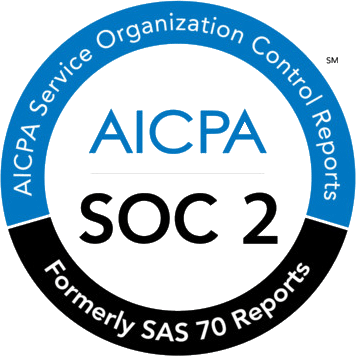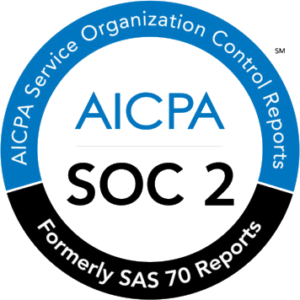2023 has been a tumultuous year for workplaces around the globe. Facilities managers, office managers, transport demand managers, and many others have had their hands full trying to design and implement effective workplace strategies for their companies.
As companies navigate through the decisions of on-site days, workplace events, and unused office space utilization, the concept of a workplace strategy has never been more vital. Therefore, as we look ahead to 2024, it is important for companies to understand what a successful workplace strategy looks like for them.
Below, we will explore the steps you should take to effectively measure the success of your workplace strategy, ensuring alignment with your organizational goals and seamless translation of strategy into action.
We will dive into six pivotal steps for measuring the success of your workplace strategy, ensuring that your company’s goals are met with precision and your strategies are in sync with execution.
Table of Contents
ToggleEnsure alignment on what success looks like for your company
Every company is completely different. Thus, it is important before even starting to measure your workplace strategy, that you have alignment and agreement on what success looks like in your workplace.
Take into account the numerous factors that are part of your workplace strategy: your employees’ needs and wants, your current business objectives, your future objectives, and so on. For example, a company that may want to bring employees back to office in 2024, should ensure to align with employees, before creating a sweeping return to office mandate. This avoids future roadblocks and consequences down the line, such as what was seen at The New York Times & Amazon in 2023.
To shape your workplace strategy, it’s not enough to have a broad idea of success—you need to envision your ideal workplace first and work backward. According to insights from Maria Roche and Andy Wu in the Harvard Business Review, the key to a successful strategy lies in understanding your organization’s size and growth orientation. They suggest that you consider two critical questions: “What is your strategy for future growth?” and “What is the size of your organization?”
Building upon these questions, envisioning the optimal workplace configuration becomes essential. For example, if fostering creativity is central to your company’s future growth, then creating a space that supports serendipitous encounters and knowledge recombination becomes imperative. This could mean investing in a stand-alone office or campus where large teams can collaborate and innovate.
On the other hand, if efficient operations & execution is the strategic goal, then a hybrid or fully remote model might be more suitable, particularly for smaller enterprises focused on execution-oriented tasks.
In both scenarios, the envisioned end-state of your workplace—be it a bustling campus facilitating cross-pollination of ideas or a digital network supporting focused execution—guides the definition of success for each element of your strategy, ensuring that your workplace design is not only aligned with your current needs but is also scalable to support your future objectives.
Choosing the best metrics to measure your workplace strategy success
Once your company has a solid vision of what success looks like, then it’s easy to begin to assign metrics to each of your strategic priorities for your workplace. It’s just a matter of choosing the right metrics & the right KPIs (Key Performance Indicators).
For instance, if a company aims to enhance collaboration among its employees, one of its KPIs could be the number of cross-departmental projects initiated or the frequency of collaborative meetings.
On the other hand, a company focusing on productivity might measure success through output-related metrics like project completion rates or sales figures.
To further refine the measurement process, companies are increasingly leveraging advanced tools and software solutions like Wayleadr. Wayleadr platforms provide a wealth of real-time data through advanced analytics, which are pivotal in the modern work environment.
Wayleadr provides unique insights into office space utilization, employee commuting patterns, and parking space efficiency. These metrics are especially relevant for companies looking to optimize their real estate footprint and support a hybrid work model.
Selecting the right KPIs is a vital process that requires an understanding of your company’s vision, the strategic objectives, and the operational context. By integrating advanced tools like Wayleadr, companies can gain deeper insights and refine their approach to ensure their workplace strategy is on the path to success.
Creating a structured process to review & monitor KPIs
Once these KPIs are set and implemented, then it is vitally important to ensure that there is a proper process in place to ensure that these metrics are being consistently met & thus the success of the workplace is being measured.
The necessity of a structured review process for continual assessment. How often to review KPIs to ensure they are being met and are still relevant. Case examples of successful KPI review processes. Understanding the qualitative measures of workplace strategy success.
The role of employee satisfaction, company culture, and other intangibles. Methods for measuring intangible elements such as employee feedback and cultural assessments.
Be Adaptable to Change
As we’ve navigated through the complexities of 2023, one lesson stands out: the ability to adapt is crucial.
Your workplace strategy should not be set in stone; rather, it needs the flexibility to evolve as your company and the world change. This adaptability is key to responding effectively to unexpected challenges and opportunities.
For example, consider how businesses had to rapidly pivot during the global events of the past few years. Those that were able to adjust their strategies swiftly, whether it was transitioning to remote work or restructuring their office spaces, often saw positive outcomes. These instances highlight that agility in your workplace strategy can lead to stronger, more resilient operations.
Measuring the success of your workplace strategy is a comprehensive and dynamic process. It begins with a clear understanding of what success looks like for your organization, taking into account the unique needs and goals of your business. From there, it’s about choosing the right metrics and KPIs, and using advanced tools like Wayleadr to gain insightful data that guides your strategy.
From optimizing office space to enhancing employee satisfaction, Wayleadr is designed to guide your strategy beyond just planning, ensuring it evolves with your company’s growth. Don’t let your strategy stagnate; visit https://wayleadr.com/ or contact us below for a demo, and step into a more efficient, adaptable future.












